10 Wild Animals in Chad [Wildlife in Chad]
Want to know more about the wildlife in Chad?
Discover 10 wild animals in Chad in this post, as well as interesting facts about them. 🇹🇩
TABLE OF CONTENTS [show]
Learn All About Chadian Animals
Ready to learn all about Chadian animals?
I’ve always been fascinated by animals and by how they can be so different from one country to another. In this guide, we’ll focus on the many animals Chad has on the land, in the sky, and underwater.
I’ve split the guide into 4 categories:
- Native animals from Chad
- Endangered animals of Chad
- What is Chad national animal?
- How many animals native to Chad?
Let’s dive in right away with our first category!
Native Animals from Chad
Chad is a large landlocked African country located in the middle of the northern and central parts of the continent. It is a country with many different biomes, from desert to fertile savanna, and it is named after Lake Chad, the second-largest wetland in Africa. It is bordered by Libya, Sudan, the Central African Republic, Cameroon, Niger, and Nigeria, and its capital city is N’Djamena, which counts more than 916,000 inhabitants (but more than 1,605,000 if you include the metropolitan area).
An interesting part of the country that I wanted to tackle is its wildlife. In light of that, I have listed the best of it, and I hope you will love learning what animals live in Chad.
Here’s the Chad animals list.
1. African leopard
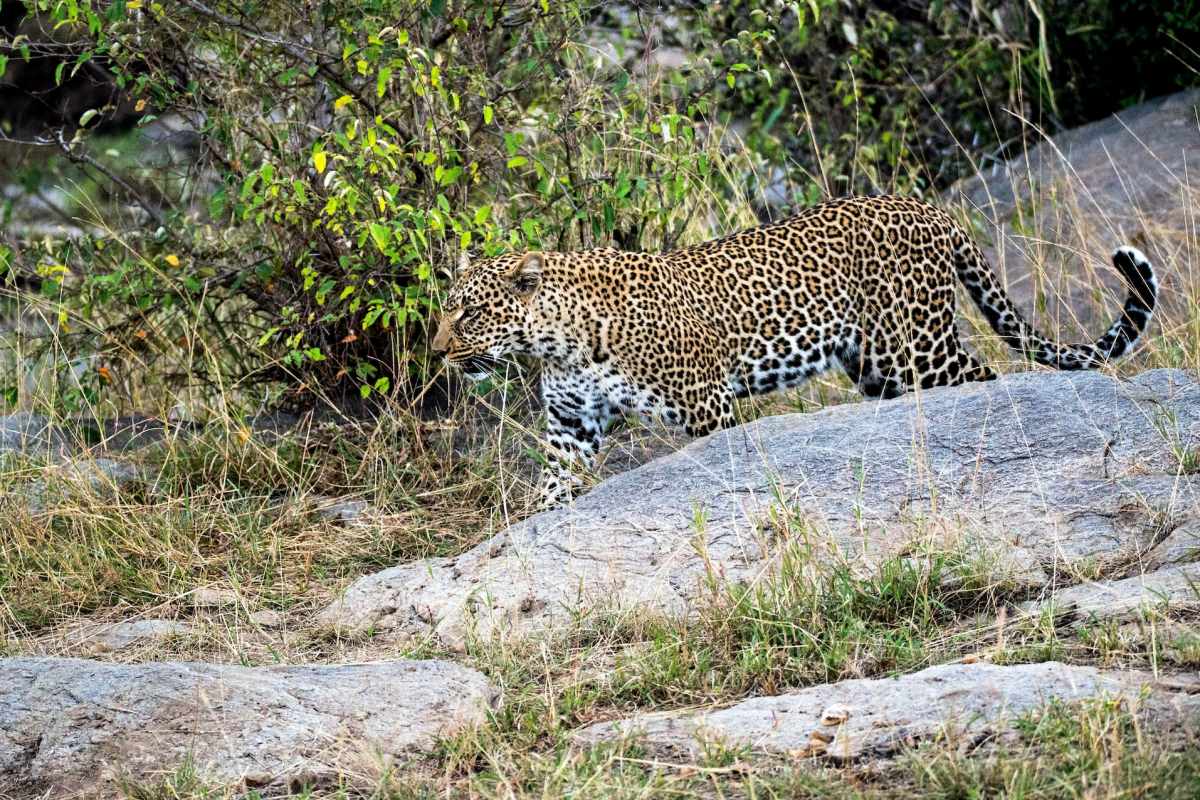
- Name: African leopard
- Scientific name: Panthera pardus pardus
- Conservation status:
The African leopard is a large species of wild cat, and the continental subspecies of the almighty leopard, one of the most iconic large carnivores on the planet.
Depending on its environment, the African leopard will have a very different coat color. Outside of sandy deserts, it can be found in almost any African habitat: from savannahs to grasslands and mountainous forests. It is one of the most versatile carnivores as well, being able to quickly shift its diet depending on prey availability.
2. Scimitar oryx

- Name: Scimitar oryx
- Scientific name: Oryx dammah
- Conservation status:
The scimitar oryx, also known as the scimitar-horned oryx or the Sahara oryx, is a large species of antelope. It has characteristic long, spiral black horns that can reach up to 1.2 m / 3 ft 11 in.
This oryx has always been part of the culture and the folklore in Africa, but it sadly went extinct in the wild in 2000. It can still be seen in several zoos and natural reserves though.
3. Striped hyena
- Name: Striped hyena
- Scientific name: Hyaena hyaena
- Conservation status:
The striped hyena is a species of hyena native to the northern half of Africa, the Middle East, the Caucasus, and Central Asia. Unlike its more famous cousin, the laughing hyena, this species is a scavenger that mostly feeds on ungulate carcasses, but also bones, cartilage, and ligaments.
It is the smallest subspecies of hyenas, and due to its diet nature, it has to compete with many predators such as wolves, tigers, leopards, caracals, and cheetahs. It can only win in one-to-one disputes against cubs but will be dominated by an adult.
4. Red-fronted gazelle
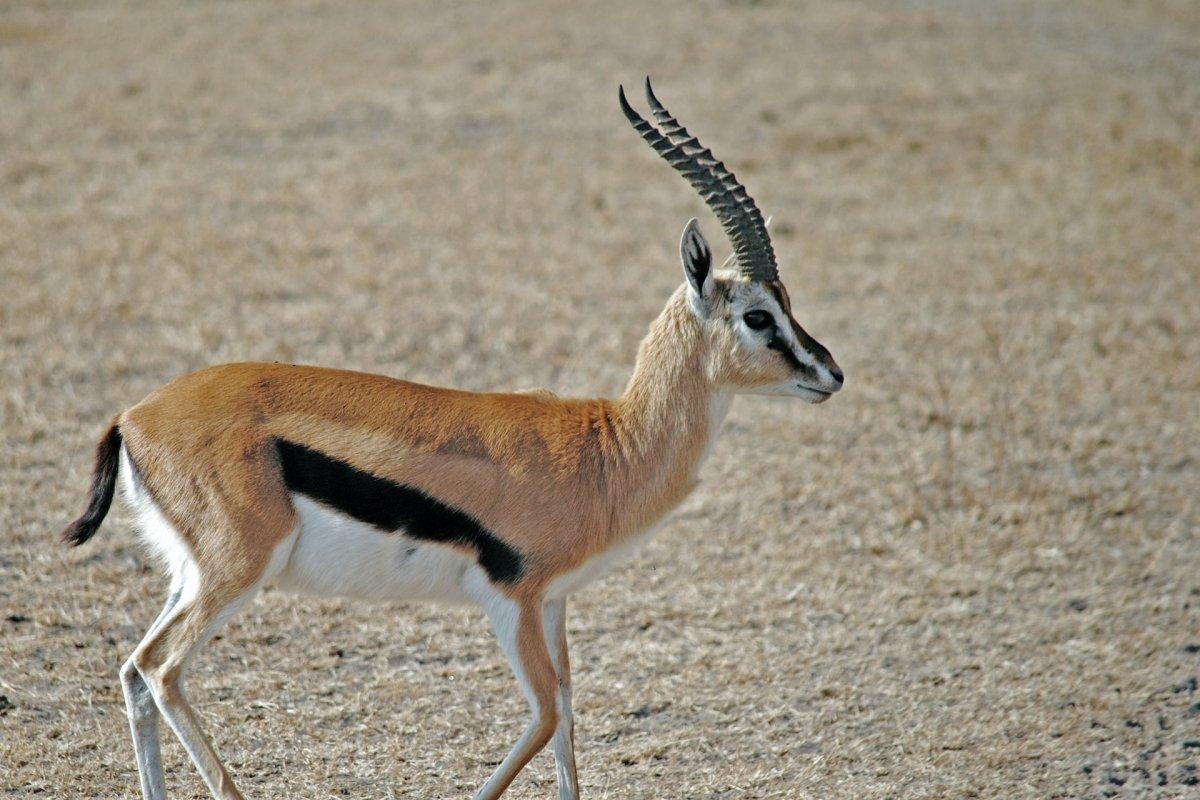
- Name: Red-fronted gazelle
- Scientific name: Eudorcas rufifrons
- Conservation status:
The red-fronted gazelle is a widely distributed species of gazelle native to Central and West Africa. It mainly dwells in the Sahel zone, and can usually be seen in shrubby steppes or wooded savannas.
Despite living in such harsh conditions, this gazelle is not well-adapted to arid environments. Because of this, it migrates southward during the dry season in order to find water. It is considered vulnerable because of its global population of 25,000 individuals, constantly on the decline.
5. African bush elephant
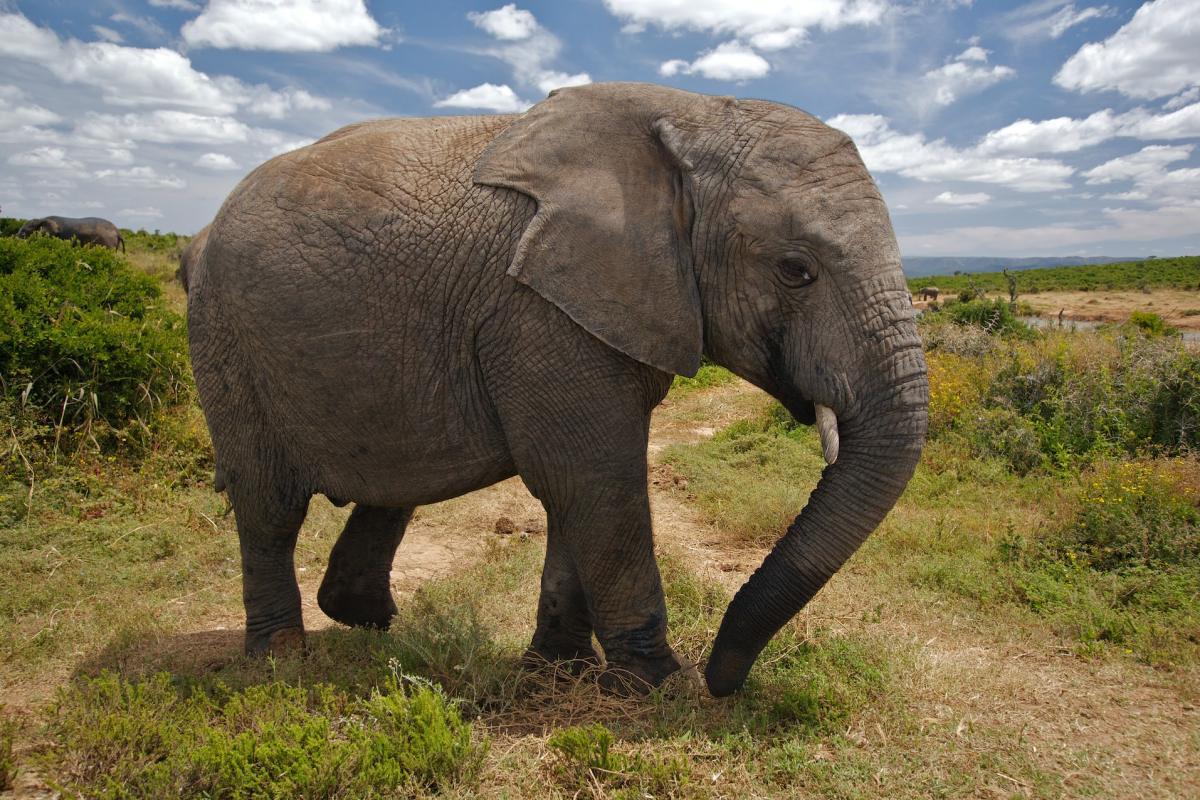
- Name: African bush elephant
- Scientific name: Loxodonta africana
- Conservation status:
If Africa had one symbol, it would definitely be the elephant. The world’s largest living terrestrial mammal inhabits 37 African countries and is infamous for being severely threatened by poaching and ivory trading.
The African bush elephant is the one subspecies that can be seen in Chad, and it lives in herds of cows and their offspring, while adult males live on their own, or in all-male groups.
6. Northeast African cheetah
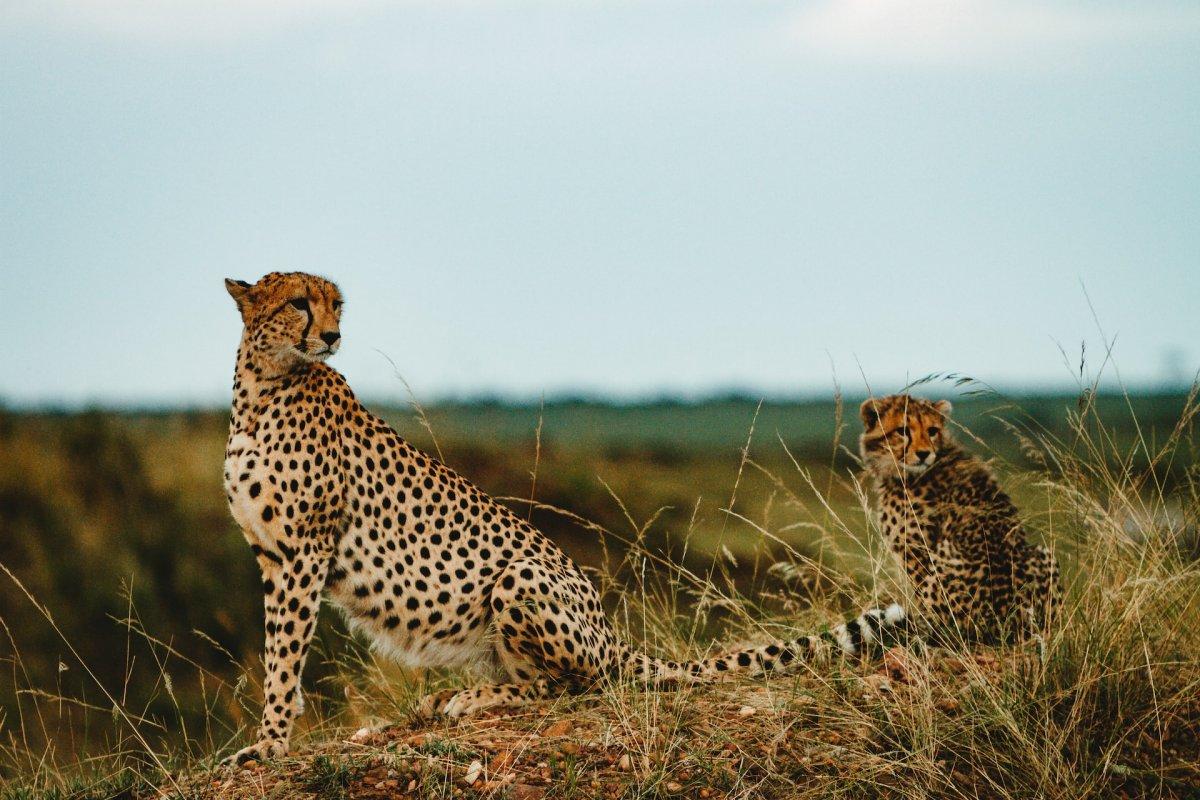
- Name: Northeast African cheetah
- Scientific name: Acinonyx jubatus soemmeringii
- Conservation status:
The Northeast African cheetah, also known as the Sudan cheetah, is a species of cheetah native to Chad, South Sudan, Ethiopia, Somalia, and Eritrea, among others.
Despite its location, it is more related to the Southern African cheetah than to the Saharan cheetah. This cheetah lives in wide open lands with abundant prey. It is carnivorous and feeds on herbivorous animals like gazelles, hares, zebras, and ostriches.
7. Aardvark
- Name: Aardvark
- Scientific name: Orycteropus afer
- Conservation status:
The aardvark is a very peculiar animal. You might have never heard of it, but it is a medium-sized nocturnal mammal that lives in burrows. It is the only living species of its order, and it has a long pig-like snout, used to sniff out food. Its diet is mainly made of termites and ants, dug out from their hills with its sharp claws.
Even though the aardvark is considered of least concern, for now, its population is still decreasing.
8. Cape hare
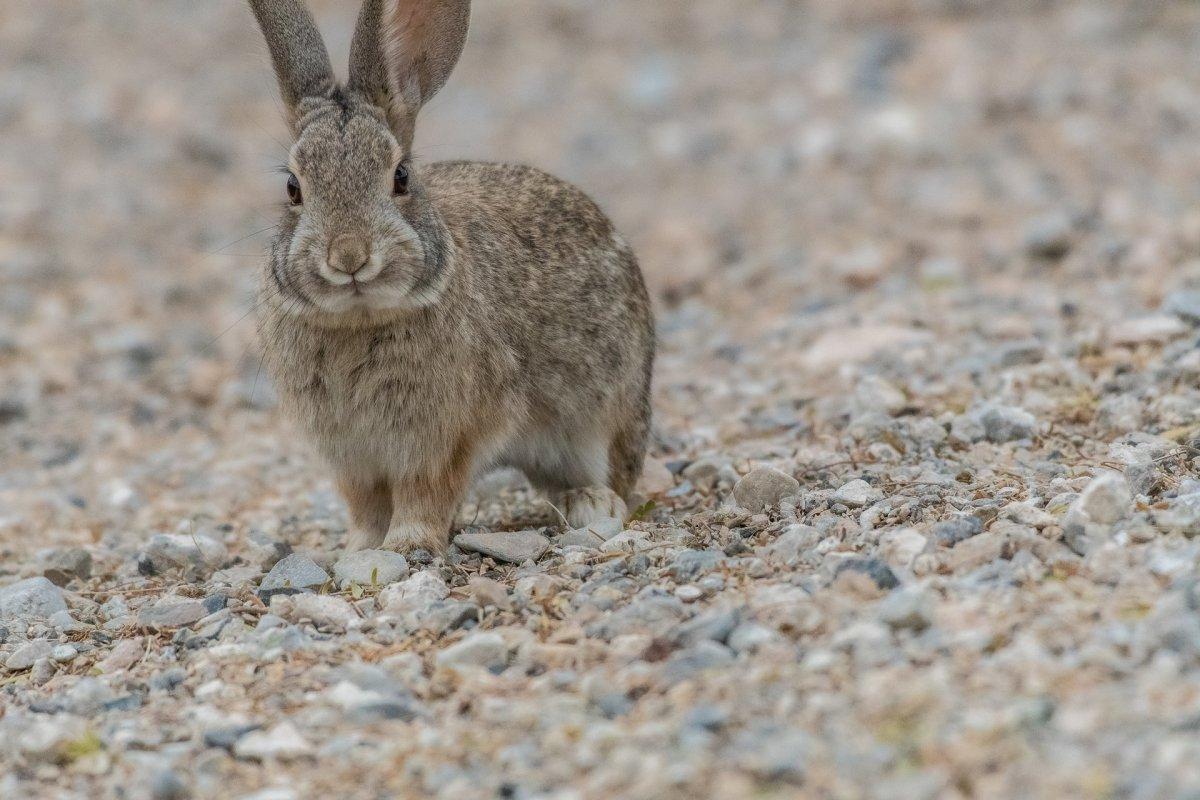
- Name: Cape hare
- Scientific name: Lepus capensis
- Conservation status:
Not everything in Chad is large or dangerous, and the Cape hare, also known as the desert hare, is a great example of that. It is native to Arabia, India, and Africa, and is fairly common throughout its range.
The Cape hare lives in grassland and semi-desert areas, and its main threats are predators such as cheetahs. Interestingly enough, it often eats its own fecal material to double the amount of time food spends in the digestive tract.
9. Caracal
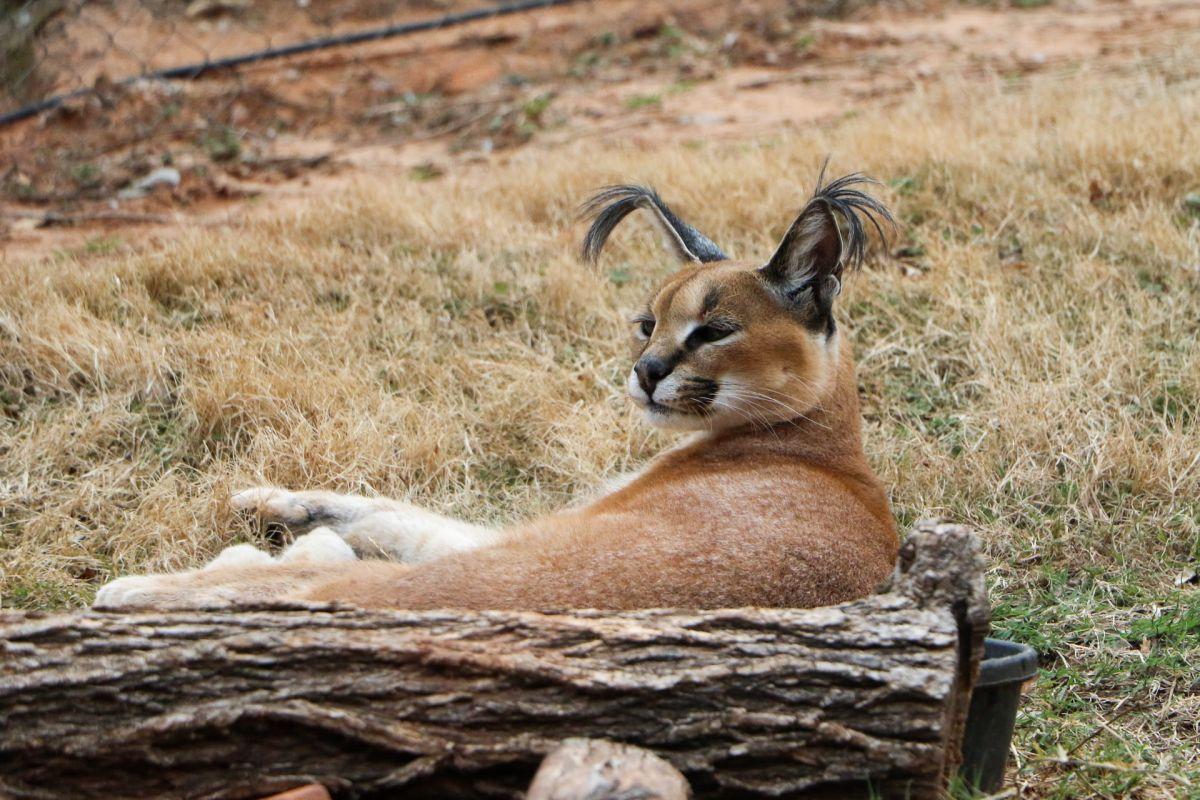
- Name: Caracal
- Scientific name: Caracal caracal
- Conservation status:
The caracal is a medium-sized species of wild cat native to Central Asia, the Indian subcontinent, the Middle East, and, of course, Africa.
It has a short face and long canine teeth and is a very agile predator. With a reddish or sandy coat, it is very well camouflaged, and it can stalk prey until it comes very close, or even catch birds in midair. Some caracals were tamed in India, Egypt, and Persia, and were used for coursing.
10. Kordofan giraffe
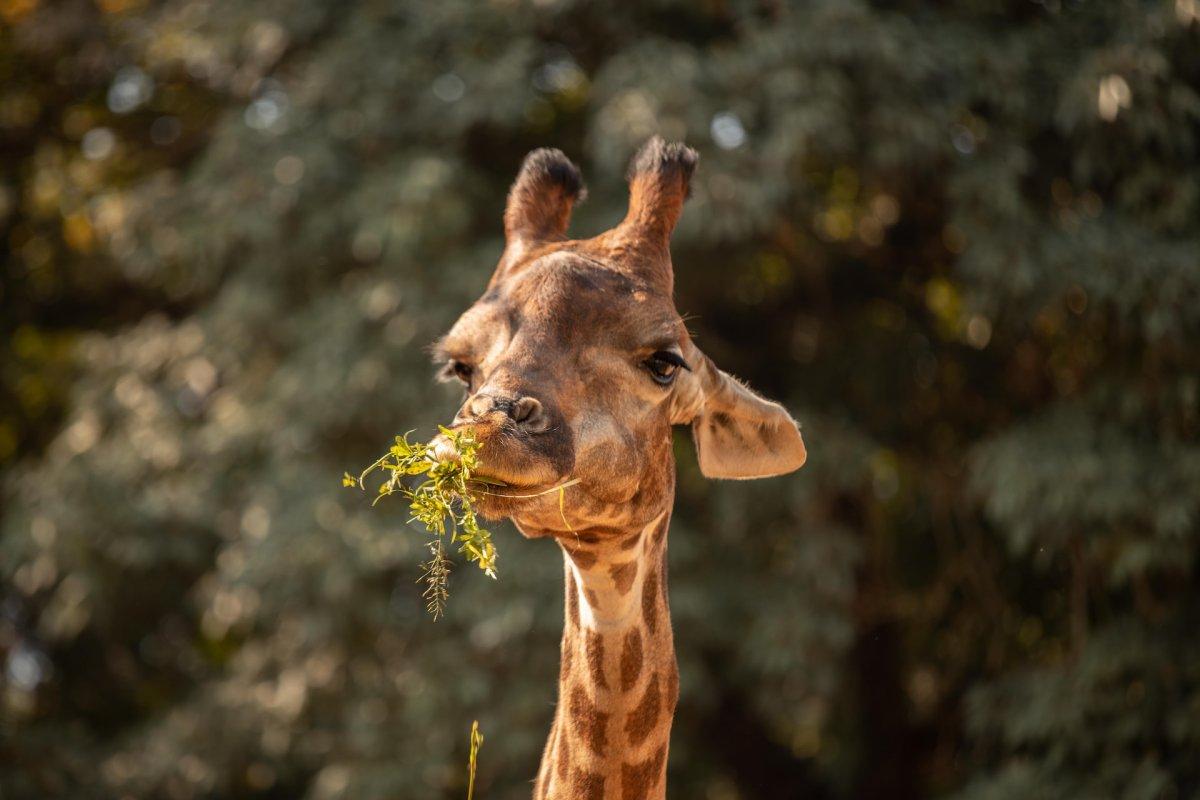
- Name: Kordofan giraffe
- Scientific name: Giraffa camelopardalis antiquorum
- Conservation status:
I could not talk about Chad without mentioning one of Africa’s most famous large animals: the Kordofan giraffe. This subspecies of the African giraffe can be found in scattered populations in several countries such as Chad, Cameroon, and the Central African Republic.
Despite being very tall, it is the smallest giraffe subspecies, reaching up to 4.7 m / 15.4 ft. It is critically endangered due to poaching, as its skin is used for luxury goods and bushmeat trading.
—
So there you have them, these were my 10 wild animals that live in Chad. I hope you enjoyed this list and that you learned something new today.
In case you want to learn more about Chad wildlife, feel free to keep reading, as I still have lots of things to tell you about:
Endangered Animals of Chad
This is definitely the saddest part of the list, but it is essential to raise awareness. Because of this, let’s go through the list of endangered animals in Chad.
Here are the animals in danger of extinction in Chad.
- Scimitar-horned oryx
- Slender-snouted crocodile
- Addax
- Black rhino
- Hooded vulture
- Dama gazelle
- and 5 more…
- African spurred tortoise
- Lappet-faced vulture
- Steppe eagle
- African savanna elephant
- Egyptian vulture
- and 7 more…
To see the full list of endangered species in Chad, head over to the International Union for Conservation of Nature’s Red List.
What is the National Animal of Chad?
The national animal of Chad is the lion… but also the goat.
Yes, Chad has 2 national animals, depending on the region of the country: in the North, the goat prevails, while the South prefers the lion.
The choice of the lion is obvious: it is a brave, fierce, and mighty animal that represents the pride of the country. As for the goat, it was probably chosen because of its usefulness and how widespread it is in the country.
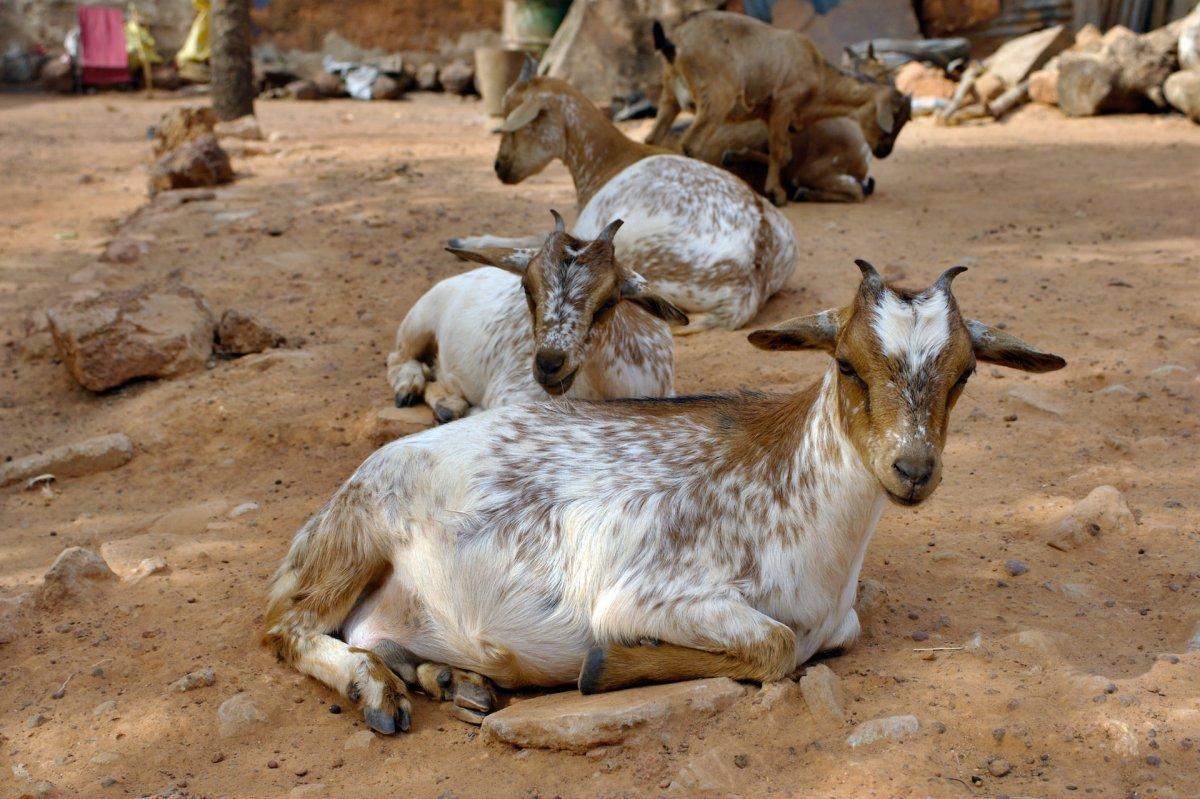
How Many Animals Native to Chad?
What is the diversity of native animals in Chad?
Let’s look at the total number of species of Chordata (mammals, birds, fishes, and reptiles).
Total number of animal species in Chad: 982 (14,205 in total in Sub-Saharan Africa)
More About Animals in the World!
Loved these facts about these Chad native animals? Want to see what animals live in other countries?
Then check out these posts:
Or click here to see ALL the facts up on the blog! Spoiler alert: there’s A LOT of them.
Share the knowledge! Click on the buttons below to share information about these famous animals in Chad Africa with your friends, and help them learn more about the world 🙂
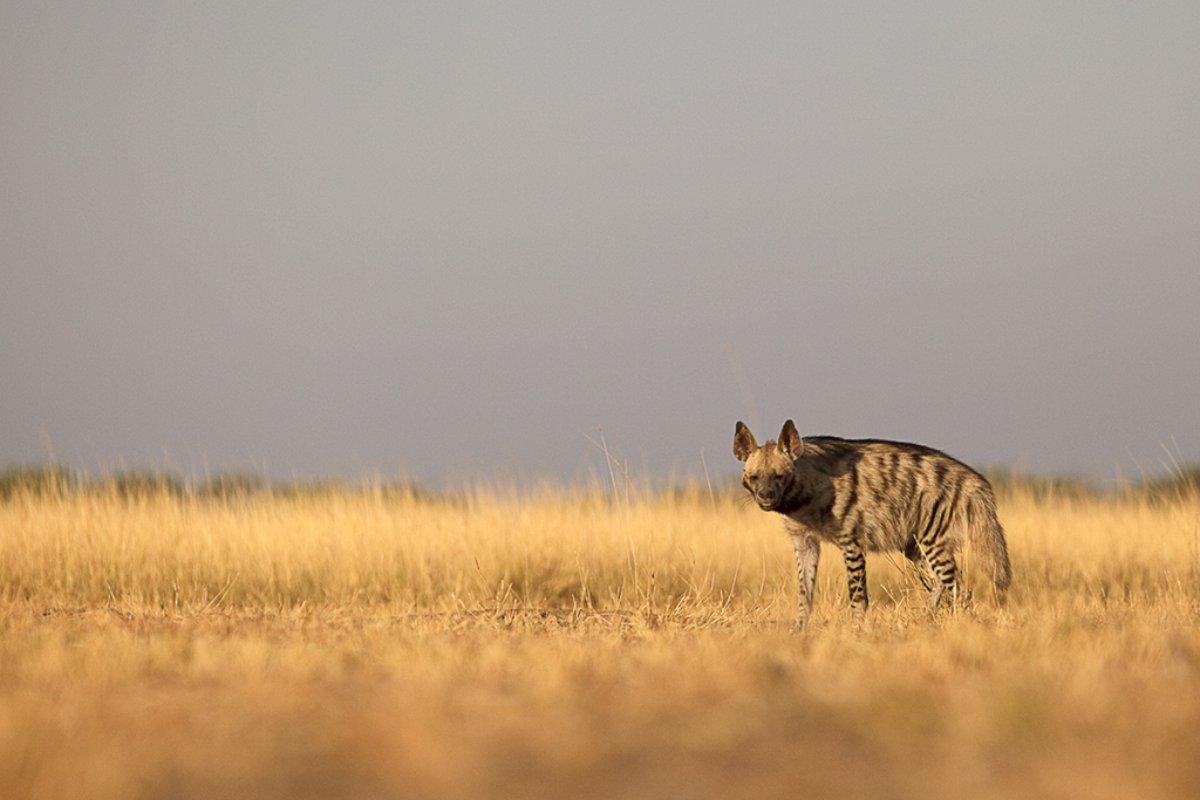
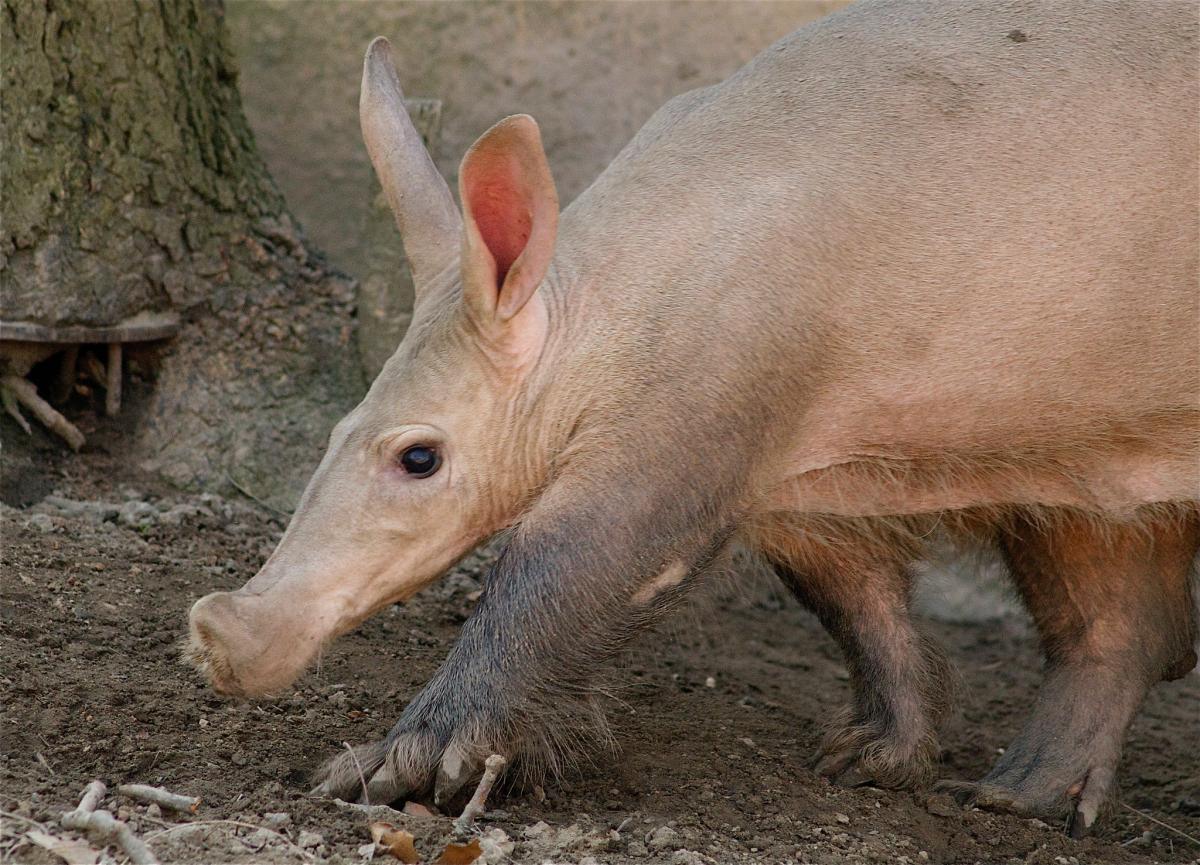

![33 Wild Animals in New Zealand [Wildlife in New Zealand]](https://www.kevmrc.com/wp-content/uploads/2023/01/33-wild-animals-in-new-zealand.jpg)
![21 Wild Animals in Chile [Wildlife in Chile]](https://www.kevmrc.com/wp-content/uploads/2022/06/21-wild-animals-in-chile.jpg)
![10 Wild Animals in Tuvalu [Wildlife in Tuvalu]](https://www.kevmrc.com/wp-content/uploads/2023/01/10-wild-animals-in-tuvalu.jpg)